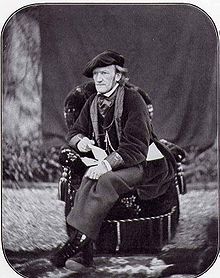
The Siegfried Idyll, WWV 103, by Richard Wagner is a symphonic poem for chamber orchestra.

The Siegfried Idyll, WWV 103, by Richard Wagner is a symphonic poem for chamber orchestra.
Wagner composed the Siegfried Idyll as a birthday present to his second wife, Cosima, after the birth of their son Siegfried in 1869. It was first performed on Christmas morning, 25 December 1870, [1] by a small ensemble of the Tonhalle-Orchester Zürich on the stairs of their villa at Tribschen (today part of Lucerne), Switzerland. Cosima awoke to its opening melody. Conductor Hans Richter learned the trumpet in order to play the brief trumpet part, which lasts only 13 measures, in that private performance, reportedly having sailed out to the centre of Lake Lucerne to practise, so as not to be heard. [2]
The original title was Triebschen Idyll with Fidi's birdsong and the orange sunrise, as symphonic birthday greeting. Presented to his Cosima by her Richard. "Fidi" was the family's nickname for their son Siegfried. It is thought that the birdsong and the sunrise refer to incidents of personal significance to the couple.
Wagner's opera Siegfried , which was premiered in 1876, incorporates music from the Idyll. Wagner adapted the material from an unfinished chamber piece into the Idyll before giving the theme to Brünnhilde in the opera's final scene, the "Ewig war ich" love duet between Brünnhilde and Siegfried. [3] This theme, Wagner claimed, came to him during the summer of 1864 at the Villa Pellet, overlooking Lake Starnberg, where he and Cosima consummated their union. He is contradicted, however, by his own obsessive record keeping: the melody was composed that 14 November, when he was alone in Munich. [4] The work also uses a theme based on the German lullaby, "Schlaf, Kindlein, schlaf", which was jotted down by Wagner on New Year's Eve 1868 and introduced by a solo oboe. [4] Ernest Newman discovered it was linked to the Wagners' older daughter Eva. This and other musical references, whose meaning remained unknown to the outside world for many years, reveal the idyll's levels of personal significance for both Wagner and Cosima. [5]
Wagner originally intended the Siegfried Idyll to remain a private piece. [6] However, due to financial pressures, he decided to sell the score to publisher B. Schott in 1878. [3] In doing so, Wagner expanded the orchestration to 35 players to make the piece more marketable. [3] The original piece is scored for a small chamber orchestra of 13 players: flute, oboe, two clarinets, bassoon, two horns, trumpet, two violins, viola, cello and double bass. The piece is commonly played today by orchestras with more than one player on each string part. Modern performances are much slower than those of earlier years. [7]
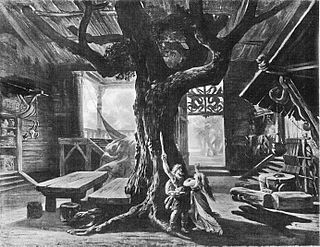
Die Walküre, WWV 86B, is the second of the four epic music dramas that constitute Richard Wagner's Der Ring des Nibelungen. It was performed, as a single opera, at the National Theatre Munich on 26 June 1870, and received its first performance as part of the Ring cycle at the Bayreuth Festspielhaus on 14 August 1876.

Richard Georg Strauss was a German composer and conductor best known for his tone poems and operas. Considered a leading composer of the late Romantic and early modern eras, he has been described as a successor of Richard Wagner and Franz Liszt. Along with Gustav Mahler, he represents the late flowering of German Romanticism, in which pioneering subtleties of orchestration are combined with an advanced harmonic style.
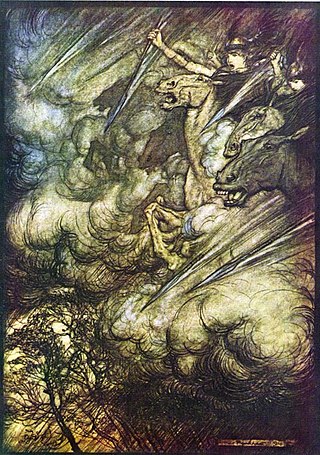
The Ride of the Valkyries is the popular name of the prelude to the first scene of the third and last act of Die Walküre, the second of the four epic music dramas that constitute Richard Wagner's Der Ring des Nibelungen.

Francesca Gaetana Cosima Wagner was the daughter of the Hungarian composer and pianist Franz Liszt and Franco-German romantic author Marie d'Agoult. She became the second wife of the German composer Richard Wagner, and with him founded the Bayreuth Festival as a showcase for his stage works; after his death she devoted the rest of her life to the promotion of his music and philosophy. Commentators have recognised Cosima as the principal inspiration for Wagner's later works, particularly Parsifal.

Siegfried Helferich Richard Wagner was a German composer and conductor, the son of Richard Wagner. He was an opera composer and the artistic director of the Bayreuth Festival from 1908 to 1930.

Symphony No. 2 in D major, Op. 73, was composed by Johannes Brahms in the summer of 1877, during a visit to Pörtschach am Wörthersee, a town in the Austrian province of Carinthia. Its composition was brief in comparison with the 21 years it took him to complete his First Symphony.

Johann Baptist Isidor Richter, or János Richter was an Austro-Hungarian orchestral and operatic conductor.

Tribschen is a district of the city of Lucerne, in the Canton of Lucerne in central Switzerland.
An Alpine Symphony, Op. 64, is a tone poem for large orchestra written by German composer Richard Strauss in 1915. It is one of Strauss's largest non-operatic works; the score calls for about 125 players and a typical performance usually lasts around 50 minutes. The program of An Alpine Symphony depicts the experiences of eleven hours spent climbing an Alpine mountain.
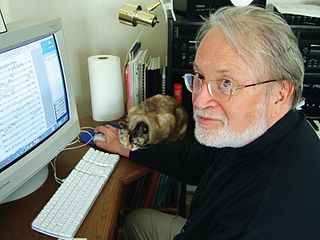
Viroslav Petrovych Baley is a Ukrainian-American composer, conductor, and pianist. He was born in Radekhiv in Poland, the only child of Petro (Peter) and Lydia Baley. Petro Baley was sent to Auschwitz concentration camp following the German invasion of Poland in 1939, and he and extended family were relocated to Slovakia. The family was reunited on a farm in Germany towards the end of the war to work as farm laborers, after which they relocated to Munich. From 1947 to 1949, the family lived in a displaced person's camp in Regensburg, Germany.
Aus Italien, Op. 16, is a tone poem or program symphony for orchestra by Richard Strauss, described by the composer as a "symphonic fantasy". It was completed in 1886 when he was 22 years old. It was inspired by the composer's visit to Italy in the summer of the same year, where he travelled to Rome, Bologna, Naples, Sorrento, Salerno, and Capri. He began to sketch the work while still on the journey.

Donald Henry Kay AM is an Australian classical composer.
Kossuth, Sz. 21, BB. 31, DD. 75a is a symphonic poem composed by Béla Bartók inspired by the Hungarian politician Lajos Kossuth.
The Symphony in C major, WWV 29, from 1832 is the only completed symphony of Richard Wagner.
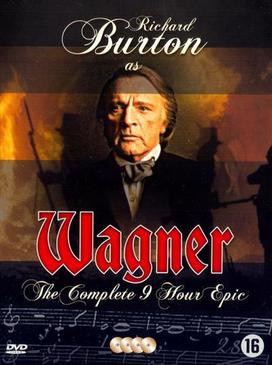
Wagner is a 1983 television miniseries on the life of Richard Wagner with Richard Burton in the title role. It was directed by Tony Palmer and written by Charles Wood. The film was later released on DVD as a ten-part miniseries.

Georg Wilhelm Rauchenecker was a German composer, conductor and violinist.
Antonín Dvořák's Symphonic Variations on the Theme “I am a fiddler” for orchestra, Op. 78, B. 70, were written in 1877. They are played fairly commonly, much like Johannes Brahms's Variations on a Theme by Haydn and Edward Elgar's Enigma Variations. They are often recorded in conjunction with his nine symphonies.

Richard Strauss composed his Symphony No. 1 in D minor in 1880 when he was just 16 years old. It consists of four movements, and lasts about 34 minutes. Although Strauss did not give a number to the symphony, it is often referred to as his First Symphony. It was premiered on 30 March 1881 at the Munich Academy of Music under the baton of Hermann Levi.

The Richard Wagner Museum is a cultural site in Lucerne, Switzerland, situated on the shore of Lake Lucerne in the district of Tribschen. The composer Richard Wagner lived here from 1866 to 1872; in 1933 it was opened as a museum.
Kinderkatechismus is an 1873 composition by Richard Wagner, originally for voices and piano and later for voices and small orchestra. Written to celebrate his wife's birthday it was sung to her by her young children.